Table of Contents
The water cycle, also known as the hydrological cycle, is the continuous movement of water within the Earth and its atmosphere. This natural process involves key stages: evaporation, condensation, precipitation, and collection. Beginning with the sun’s heat, water evaporates from surfaces like rivers, oceans, and lakes, rising into the atmosphere as vapor. It then cools, condensing to form clouds, which eventually release water as precipitation—rain, snow, sleet, or hail. This water collects in bodies of water, restarting the cycle. Essential for life, the water cycle maintains ecosystem balance, supports agriculture, and regulates climate, illustrating the interconnectedness of nature’s processes. Check Water Cycle Diagram with explanation is given below.
Water Cycle
The water cycle consists of several key stages:
Evaporation: Sunlight heats water bodies like oceans, lakes, and rivers, causing water molecules to gain energy and turn into water vapor. This vapor rises into the atmosphere.
Condensation: As water vapor rises and cools at higher altitudes, it turns back into tiny water droplets. These droplets combine to form clouds.
Precipitation: When the air in the clouds becomes saturated or too cool to hold the water droplets, they cluster together and fall to the Earth’s surface as precipitation. This can take the form of rain, snow, sleet, or hail.
Runoff: Some of the precipitation flows over the land surface as runoff, either entering rivers and streams directly or infiltrating the ground to become groundwater.
Infiltration: Some precipitation seeps into the ground, replenishing underground water sources and contributing to groundwater reservoirs.
Transpiration: Plants absorb water from the soil through their roots and release it as water vapor into the atmosphere through small pores called stomata in their leaves.
Sublimation: In cold regions, ice and snow can turn directly into water vapor without melting, a process known as sublimation.
Melting: Ice and snow in colder areas can melt due to rising temperatures, contributing to surface water sources and groundwater.
Freezing: When temperatures drop, water can freeze and turn into ice, which can accumulate on the Earth’s surface, such as in glaciers or ice caps.
The water cycle is a vital process that sustains life on Earth by continually redistributing water resources. It ensures a constant supply of fresh water for various purposes, including drinking, agriculture, industry, and maintaining ecosystems. The movement of water through its various phases helps regulate temperature and climate patterns on the planet.
What is Water Cycle?
Water is one of the fundamental natural resources on our planet Earth. Around 71% of the earth’s surface is covered by water. Water can’t be created or destroyed. Thousands of years ago when the earth formed, from then the total quantity of water remains the same today and will same in future years. In this scenario, we are introduced to the Water cycle. In this article, we are going to learn about the water cycle, the water cycle diagram, its stages, and its significance.
Water Cycle Diagram
The water cycle diagram is a bio-geological cycle that includes a continuous circulation or flow of water through different phases of the ecosystem. The water cycle is a natural recycling process of water in the environment. The water cycle is also called the hydrological cycle or the hydrologic cycle. We know that water has mainly 3 states- liquid, solid and gaseous or water vapor. During the process of the water cycle water changes into those three states between the earth and the atmosphere.
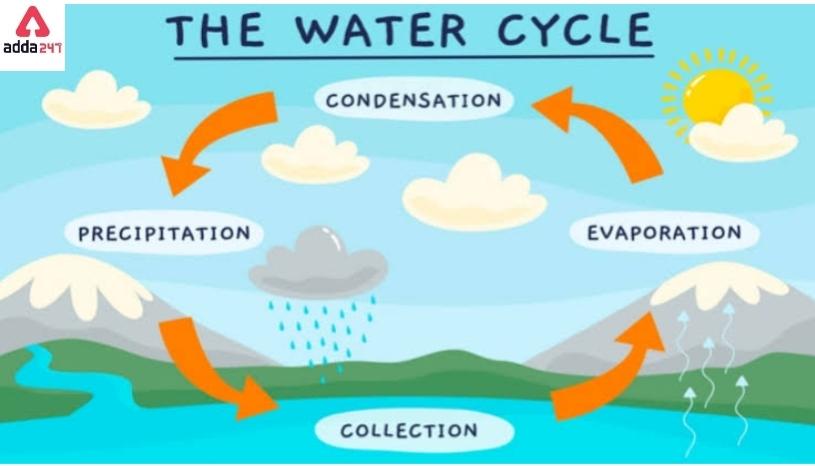
Water Cycle Diagram Explaination
The water cycle, or hydrologic cycle, is a continuous process in which water moves through various phases and locations on Earth. Here’s a breakdown of the main stages in the water cycle:
Evaporation: Sunlight heats water in rivers, lakes, and oceans, causing it to turn into water vapor (gas) and rise into the atmosphere.
Transpiration: Plants also contribute to water vapor through a process called transpiration, where they release moisture from their leaves into the air.
Condensation: As water vapor rises, it cools and condenses to form clouds. Condensation changes the vapor back into tiny droplets or ice crystals, depending on the temperature.
Precipitation: When water droplets in clouds become too heavy, they fall back to Earth as precipitation, such as rain, snow, sleet, or hail.
Runoff: Water from precipitation flows over the ground surface, creating streams and rivers that lead back to larger bodies of water like lakes and oceans. Some water infiltrates the soil, replenishing groundwater supplies.
Infiltration and Groundwater: A portion of precipitation seeps into the ground, replenishing underground aquifers. Groundwater can eventually flow back into surface water systems or be drawn up by plant roots, restarting the cycle.
This cycle ensures the distribution and purification of water, supporting life on Earth.
Water Cycle Drawing for Class 3
The water cycle or hydrological cycle that process goes through various stages. The water cycle is one of the asked in board exams. Before we learn about this stage, we must understand the water cycle by a simple diagram.
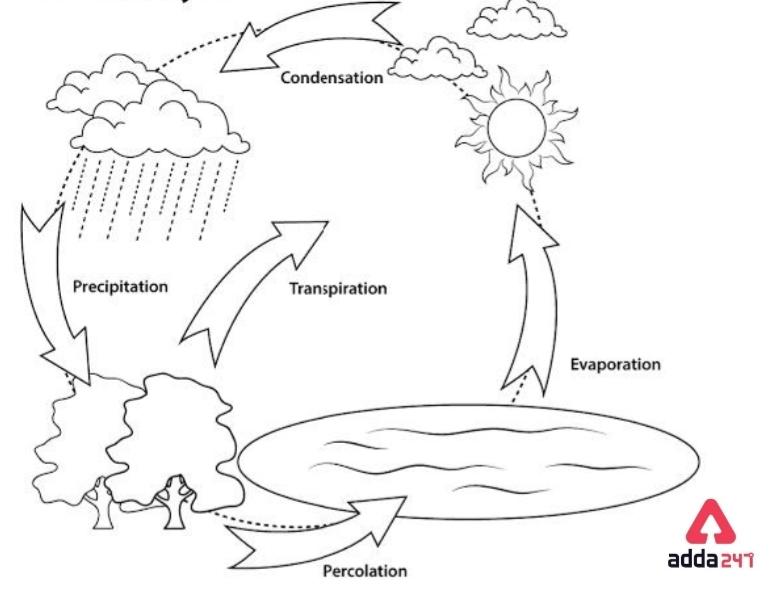
Water cycle Diagram Class 4 for Kids with Explanation and Pictures
The water cycle is a naturally continuous recycling process of water through different ecosystems, The water cycle process mainly includes four stages. These are-
Water cycle diagram Stage 1- Evaporation
Evaporation is the initial stage of the water cycle. Most of the earth’s water is held by the world’s ocean and the rest of held by rivers, lakes and the south, and north pole informs of ice. We are all aware that Sun is the main source of energy. When sunlight heats up the water and some of the energies are transferred to those tiny water particles. Due to heating up, the water particles are charged and move faster. They move into the air from the water body in form of vapour. This process is known as Evaporation. In one word, Evaporation is the process by which liquid water changes its state into vapour. Evaporation can also occur by transpiration in which water evaporates through minute pores, or stomata, in the leaves of plants.
Water cycle diagram Stage 2- Condensation
Condensation is the second stage of the water cycle. When the evaporated water particles along with warm air rise up from the earth’s surface, it loses its energy and cools down. After that particles of water vapour collect small particles of dust which are floating in the air and get closer to form water droplets. This is process is known as condensation. The formation of clouds is an example of condensation.
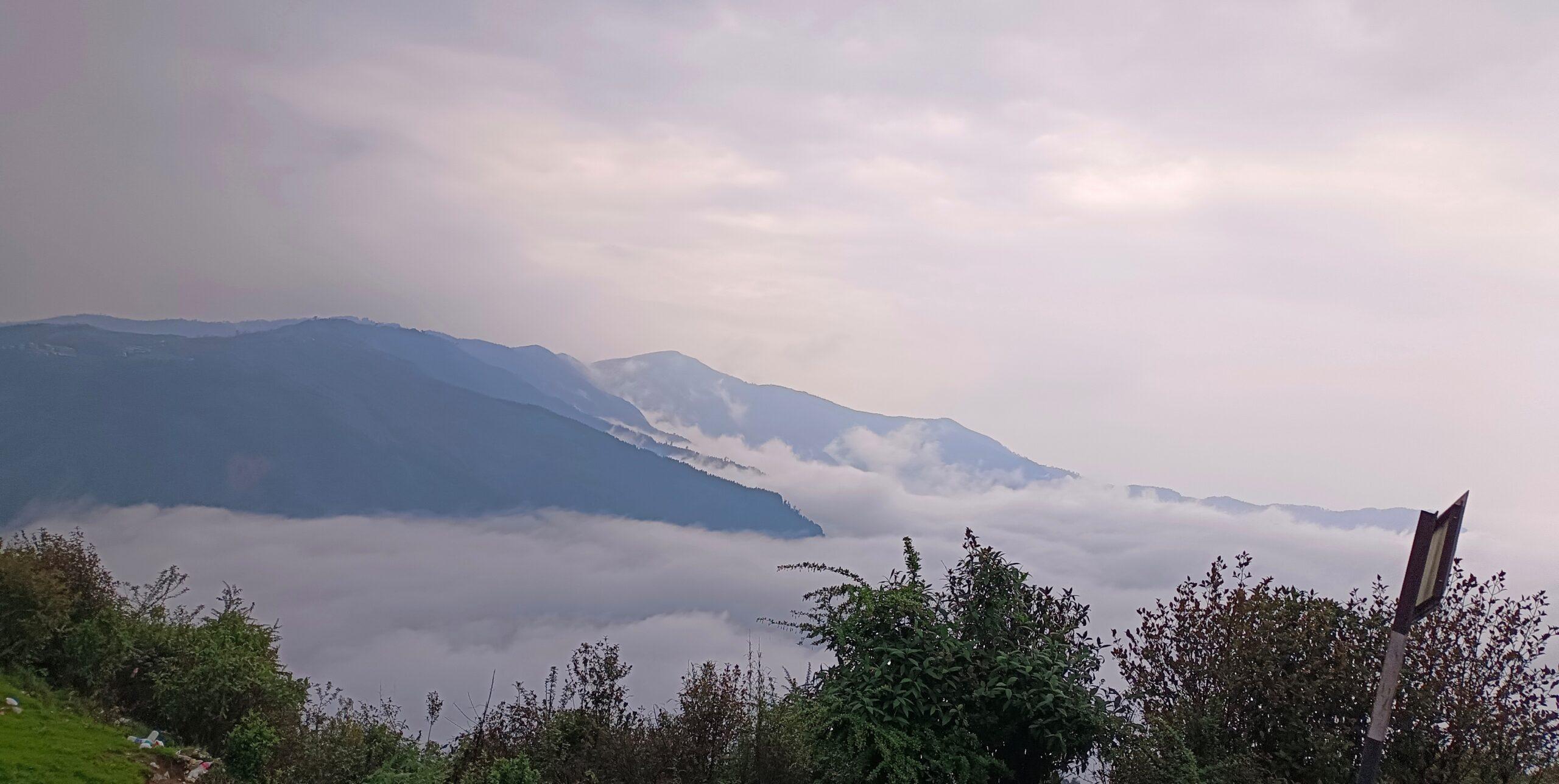
Water cycle diagram Stage 3- Precipitation
After Condensation, water particles come together and this process continues. When water vapour collects sufficient water and forms large droplets. Due to gravity, large droplets fall back to the earth, known as precipitation. Some examples of precipitation are rain, snow, hail and sleet.
Water cycle diagram Stage 4- Deposition or collection
The deposition is the last stage of the water cycle. After precipitation, when evaporated water droplets fall back on the earth’s surface in form of rain, snow etc. It may deposit in various water bodies, including lakes, rivers, oceans, ponds or in lands which turn into groundwater.
Thus, this water cycle repeats itself again and again.
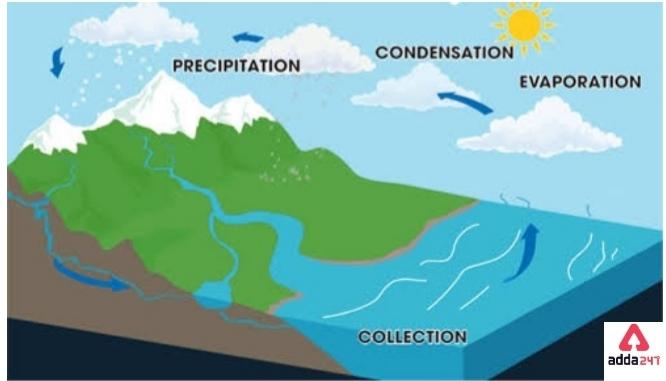
Water Cycle Process- The 7 Steps
The table below consists of 7 steps of the water cycle for grade 4.
| Step | Process | Description |
|---|---|---|
| Step 1 | Evaporation | Water changes from a liquid to a gas due to the sun’s heat, causing water molecules to escape into the atmosphere. |
| Step 2 | Condensation | Water vapor cools and forms into liquid droplets around particles in the air, leading to cloud formation. |
| Step 3 | Precipitation | Water falls from the atmosphere to the Earth’s surface in various forms like rain, snow, sleet, or hail. |
| Step 4 | Interception | Vegetation catches and holds water droplets or snowflakes before they reach the ground. |
| Step 5 | Infiltration | Water from precipitation seeps into the ground, moving through the soil. |
| Step 6 | Percolation | Water from infiltration continues to move downward through the soil, eventually reaching the groundwater. |
| Step 7 | Transpiration | Plants release water vapor into the atmosphere through their leaves, contributing to the water cycle. |
Water Cycle Importance
The water cycle is a biogeological cycle that includes a continuous circulation or flow of water through different phases of the ecosystem. The water cycle plays a significant role in our environment.
1. The water cycle maintains the balance of the aquatic ecosystem.
2. The water cycle ensures the availability of water among all organisms, including plants, humans, and many other organisms.
3. The water cycle regulates weather patterns and temperature.
4. This cycle plays a vital role in agriculture. Because of the water cycle, we get rain to produce crops.






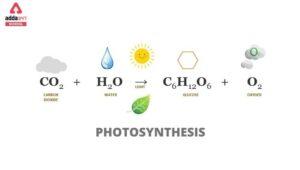 Photosynthesis: Equation, Reaction, Diag...
Photosynthesis: Equation, Reaction, Diag...
 50 Water Animals Name: Check 20 Examples...
50 Water Animals Name: Check 20 Examples...
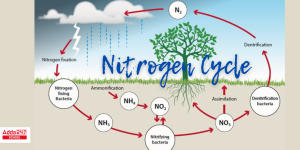 Nitrogen Cycle: Diagram, Drawing for Cla...
Nitrogen Cycle: Diagram, Drawing for Cla...































